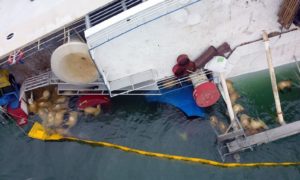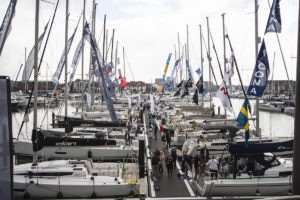Wreck of the Titanic’s ‘sister ship’ the Britannic may be opened to divers
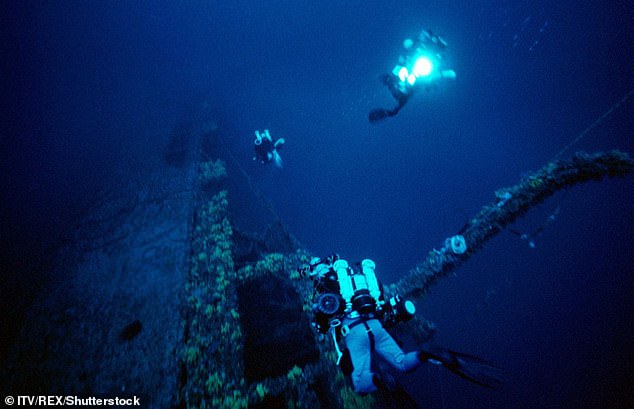
The Titanic‘s ill-fated sister ship, the Britannic, could soon be a tourist attraction more than 300ft (100m) below the Aegean sea, according to the Daily Mail.
The vessel was made as part of the same project that created the Titanic and became a naval hospital ship for British forces in WWI.
It hit a sea mine in the Aegean off the coast of Greek island Kea in 1916 and within an hour was at the bottom of the sea. Thirty people onboard died.
Proposals from the Greek government will be voted on next month to loosen legislation preventing divers from visiting wrecks for fear of looting.
The imminent tweak will see divers granted permission to visit wrecks from between 1860 and 1970 as part of an underwater park.
The 883-foot shipwreck was discovered listed on one side and largely intact in 1975 by famed marine explorer, Jacques Cousteau.
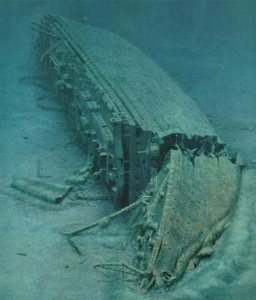
A breach in the hull from a German sea mine
Yannis Tzavelakos, a local diving instructor who has been calling for more freedom to visit the Britannic, told The Times: “It is a positive development.
“Such initiatives can only facilitate innovative projects and add to the tourism industry.
“But much more than good intentions are needed. This time we need to see proof that designs like these will go through.”
The Britannic is too far underwater for most recreational scuba divers but experienced technical divers can reach and explore the wreck.
The plans from the Greek government would also apply lenient laws to other notable wreckage in the Aegean.
A Junkers Ju 52, the three-engined Luftwaffe plane used in WWII, would likely become part of the underwater park after crashing off the coast of Paros in 1943. World War Two British submarine, HMS Perseus, which sank in 1941 and killed 60 of the 61 onboard when it hit an Italian mine, would also likely be open to exploration.
The laws would still prohibit the exploration of older wrecks dating back to beyond 1860.
Britannic and Olympic are the two lesser-known sister ships built by Harland & Wolff for the White Star Line shipping company. All were dubbed ‘Olympic class’ and unsinkable.
Olympic was the only one to not sink and was retired from service and scrapped in 1935.
Britannic was the largest of the three and was delayed after the tragedy of Titanic, and improvements were made to make sure she was fully safe for service. After completion in early 1914, the outbreak of WWI put an end to her luxury liner plans and the 48,000 tonne vessel was converted into a hospital ship for the Royal Navy before her maiden voyage.
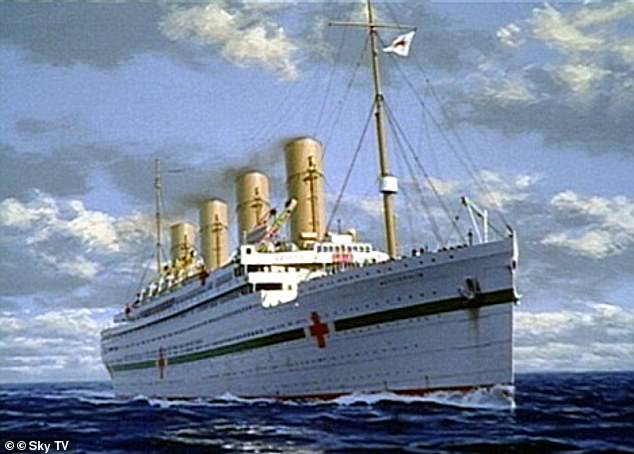
On its sixth trip through the Aegean on November 21, 1916 to pick up wounded soldiers from the Middle East, the Britannic hit a mine planted just one month earlier by a German U-boat.
A breach in the hull and open portholes to ventilate hospital wards saw water pour in and the ship began to list to the starboard side, where water was gathering following the explosion to this flank.
In a desperate bid to save the lives of the people onboard, Captain Bartlett attempted to beach the Britannic in the shallow waters of nearby Kea.
As he was desperately churning the propellers to this end, the medics were evacuating people.
One of the improvements made to Britannic following the Titanic catastrophe was the ability to deploy lifeboats even when the vessel was severely listed.
This allowed them to put two lifeboats in the water to the port side as it was sinking during the captain’s last-ditch manoeuvre.
Unfortunately, they were deployed too soon and became tangled in the propellers and two boats and their fleeing inhabitants were caught in the spinning blades.
The captain managed to cut off the engine before any more lives or boats were lost.
Read the full article in the Daily Mail.
